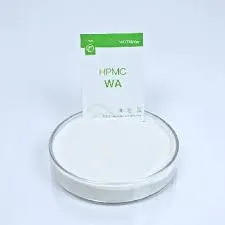
Nov . 26, 2024 02:40 Back to list
Revolutionizing Construction with Redispersible Polymer Powder Innovations for Enhanced Performance
Understanding Redispersible Polymer Powder Applications and Benefits
Redispersible polymer powder (RDP) has emerged as a vital component in various construction and building materials, particularly in applications involving cementitious and gypsum-based formulations. This innovative material plays a crucial role in enhancing the performance characteristics of these products, making it essential for professionals in the construction industry to understand its properties and benefits.
RDP is created through the spray drying of aqueous polymer emulsions. As a result, it can be easily integrated into dry mix formulations. When the powder is mixed with water, it disperses readily, creating a homogenous polymer matrix that enhances the overall performance of the mix. This property makes RDP particularly valuable in the production of tile adhesives, plasters, mortars, and other cement-based materials, where improved adhesion and flexibility are critical.
Understanding Redispersible Polymer Powder Applications and Benefits
Another significant benefit of RDP is its contribution to the flexibility and deformability of building materials. Conventional cementitious mixtures can be brittle, leading to cracking and other issues over time. However, the inclusion of redispersible polymer powder allows for increased flexibility, enabling the materials to withstand movements and stresses without compromising their integrity. This is especially crucial in areas prone to seismic activity or significant temperature changes.
re dispersible polymer powder

Additionally, RDP enhances the workability of construction materials. By improving the flow characteristics of mortars and adhesives, RDP enables easier application and spreadability, which can significantly reduce labor costs and time on site. Smooth application is particularly important in tile laying and plastering, where consistency is key to achieving a professional finish.
Moreover, RDP improves the water retention of a mix, which is vital in preventing the premature drying of the material before it sets. This allows for better curing of the cement, which is essential for achieving the desired strength and durability.
The versatility of redispersible polymer powder extends beyond construction. It is also used in various applications, including paints, coatings, and adhesives. In these contexts, RDP contributes to improved adhesion, flexibility, and durability, making it a go-to choice for many formulations.
In summary, redispersible polymer powder is an essential ingredient in modern construction materials, providing numerous benefits, including enhanced adhesion, flexibility, workability, and water retention. As the construction industry continues to evolve, the demand for high-performance materials like RDP will likely increase. Understanding and incorporating RDP into building formulations can lead to more durable, efficient, and cost-effective solutions for a wide range of applications. Therefore, industry professionals should stay informed about the latest advancements in RDP technology to leverage its full potential in their projects.
-
Premium Cellulose Ether: Effective Liquid Thickener & Stabilizer
NewsAug.31,2025
-
HPMC for Tile Adhesive: Superior Bonding & Workability
NewsAug.30,2025
-
Premium Cellulose Ether: Effective Liquid Thickener Solutions
NewsAug.29,2025
-
HPMC for Tile Adhesive: Enhanced Bonding & Workability
NewsAug.28,2025
-
tile-bonding-additives-for-stronger-bonds
NewsAug.22,2025
-
construction-grade-rdp-for-wholesale-needs
NewsAug.22,2025







